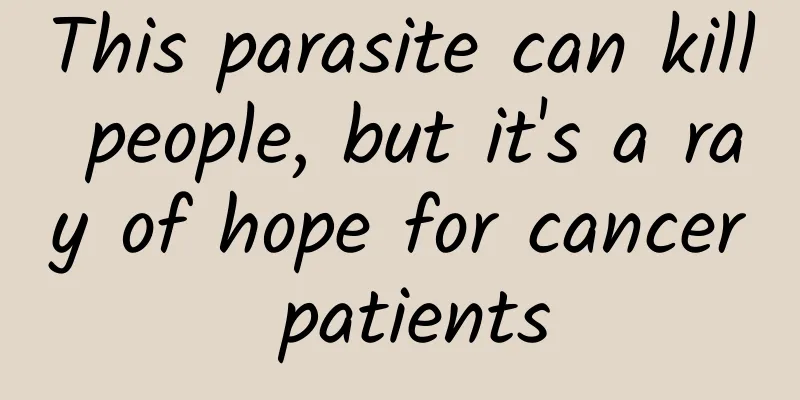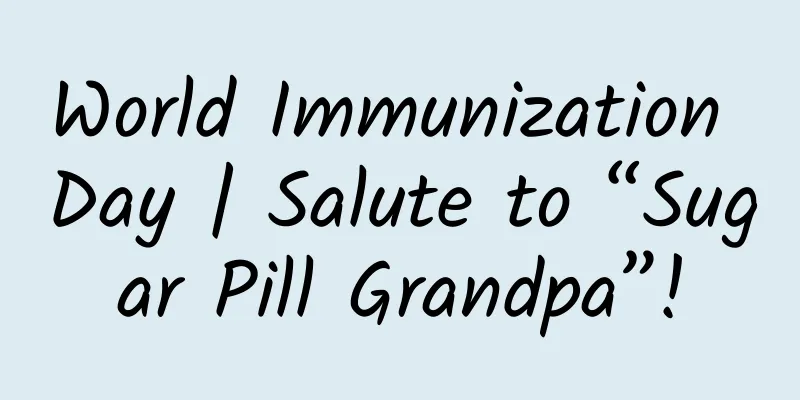This parasite can kill people, but it's a ray of hope for cancer patients

|
Injecting live parasites into the human body can stimulate the immune system to kill the bigger enemy - cancer cells. This anti-cancer idea that sounds like a fantasy may lead to effective anti-cancer therapy. Toxoplasma gondii is a parasite that we often come into contact with in our lives. It can infect almost all warm-blooded animals. Toxoplasma gondii is often found in soil or water contaminated by cat feces, as well as in the meat of infected animals. Although for most people, Toxoplasma infection does not cause symptoms, but for immunocompromised people, pregnant women and fetuses, this infection can be fatal. The idea of using the parasite to treat cancer arose in the 1960s and 1970s when scientists observed that mice infected with Toxoplasma gondii had increased immunity to some pathogens and cancers. In the decades since, evidence has been growing that Toxoplasma infection can help treat cancer. Using a dangerous parasite to treat cancer may sound like playing with fire, but a century ago, some clinicians had the idea of using pathogens to treat cancer. Poison as medicine At the end of the 19th century, William Coley, a cancer surgeon in New York, made a surprising discovery while reviewing old medical records: a patient with advanced cancer had been infected with bacteria seven years ago. This may not seem worthy of attention, but when Coley was looking through the old records, he found that this patient, who should have died of cancer soon, was still alive and in good health! Coley speculated that something related to bacterial infection might be causing the tumors to shrink, so he began trying to inject his cancer patients with live or dead bacteria. Although not every patient survived, the tumors of those who did survive the infection usually shrank. Eventually, Coley standardized his treatment into a vaccine containing a dead bacteria called "Coley's toxin." When injected, this drug could induce an anti-cancer inflammatory response in patients without being infected with a live pathogen. Many people have tried to replicate Coley's research results, but with poor results. With the advent of radiotherapy, Coley's toxins are no longer the first choice for cancer treatment. However, the idea of enhancing the immune system's ability to fight cancer remains. In addition to Coley's toxins, scientists have tried other ways to stimulate the immune system to suppress tumors, which is also called "in situ vaccination." In 2016, Steven Fiering, a tumor immunologist at the Geisel School of Medicine at Dartmouth University, and his team confirmed that in a mouse cancer model, injecting nanoparticles containing inactivated "cowpea mosaic virus" into tumors can inhibit the growth of a variety of metastatic tumors, including ovarian cancer, colon cancer, and breast cancer. There is also a "T-Vec" therapy that injects oncolytic viruses into tumors, which is currently used to treat patients with advanced melanoma. Putting the brakes on immunity Our immune cells are equipped with receptor molecules called immune checkpoints, which act like brakes for the immune system. Nearby immune cells can pull down the brakes to prevent immune responses from being triggered inappropriately or lasting too long. However, many tumors also cunningly use the brakes to suppress immune responses that can fight tumors. The corresponding immune checkpoint inhibition therapy works by blocking the immune checkpoint molecules from transmitting inhibitory signals, preventing tumor tissue from pulling down the immune "brakes" and allowing the immune system to resume work and fight tumors. This treatment method has been successful in some patients, but not in all, and scientists have not yet fully understood the reasons. In November 2021, a study published in Cancer Immunotherapy found that mice that received both immune checkpoint inhibition therapy and Toxoplasma gondii in situ vaccination had better tumor shrinkage than mice that received only immune checkpoint inhibition therapy. “This is a very interesting finding that could help treat patients who don’t initially respond to immune checkpoint inhibition,” says David Bzik, an immunologist at Dartmouth College. “If we can figure out what this parasite and other immunotherapies do, we may be able to develop new anticancer therapies,” says Christopher Hunter, an immunoparasitologist at the University of Pennsylvania. Toxoplasma gondii's "unique skills" We need different types of immune pathways to fight different types of diseases. And the immune response of the immune system to fight Toxoplasma infection is exactly the same response needed to fight cancer. "When Toxoplasma is introduced into the tumor, it actually triggers an anti-cancer response and reverses the immunosuppression," Buzik said. Why does Toxoplasma gondii trigger an immune response against cancer? This is because the parasite needs the host to survive long enough to reach a life stage where it can reproduce. So Toxoplasma gondii triggers a strong immune response in the early stages of infection to control cell replication in the body. This immune response is exactly what we need. In 2013, Buzik, Fiering and their colleagues found that mice with ovarian cancer who were infected with a parasite whose cells could not replicate normally had a significant increase in the number and activity of cancer-fighting T cells. Moreover, when the T cells from these mice were injected into other mice with cancer but not infected with Toxoplasma, the growth of tumors in the latter mice was also significantly suppressed. Other studies have shown that the parasite is also effective against mice with pancreatic cancer and melanoma. In a new study published in 2021, Hany Elsheikha of the School of Veterinary Medicine at the University of Nottingham in the UK and his Chinese colleagues found that infection with another strain of Toxoplasma with weakened replication ability can cause T cells and natural killer cells to flock to tumors and kill cancer cells. This therapy, in conjunction with immune checkpoint inhibition therapy, is more effective than inhibiting immune checkpoints alone. The researchers also found that when mice had two tumors, they used immune checkpoint inhibitors but injected Toxoplasma into only one of the tumors, and the other tumor still shrank. "Unfortunately, many patients are not diagnosed until their cancer has metastasized, making it nearly impossible to treat or remove all of the tumor," Buzik said. "But this new study shows that by treating the tumor at the original site, the therapy can also suppress metastatic tumors." Means, not ends Despite some promising results, Filin abandoned the idea of using Toxoplasma to develop an in situ cancer vaccine several years ago because culturing Toxoplasma requires living cells, but what is needed clinically is "something that can be taken out of the freezer or shelf and injected into the patient, rather than something that needs to be taken out of the culture of living cells every few days," Filin said. "So, a Toxoplasma vaccine is not practical from a clinical perspective." Technical hurdles aside, all the scientists interviewed doubted whether a therapy that involves injecting patients with dangerous live parasites could ever be used clinically. Elshekar and his colleagues never thought of promoting Toxoplasma-based therapies. Their research goal was to find out the exact reason why immune checkpoint inhibition was lifted and tumors shrank significantly after infection with Toxoplasma. Elshekar believes that Toxoplasma is a powerful tool for understanding basic biological mechanisms. "Compared to many other model organisms, it is relatively easy to genetically modify Toxoplasma," Hunter said. "Scientists can knock out certain genes in Toxoplasma to study which immune pathways are critical in fighting cancer." Hunter's team discovered that during Toxoplasma infection, interleukin-27 (IL-27) can suppress the immune response against the parasite. Based on this research, a clinical trial to block IL-27 in advanced solid tumors is currently underway. Pascale Guiton, a microbiologist at California State University, East Bay, says researchers can build on Elshekar's work by studying how to stimulate the same immune response in the absence of Toxoplasma. He points out that one clue is that dead parasites fail to elicit the same immune response, suggesting that it may be a protein secreted by the parasite rather than a protein on its surface that triggers the response. In addition, Buzik said that from the perspective of cancer biology, the study of Toxoplasma infection is meaningful for the development of immune checkpoint inhibition therapy. "There are many checkpoint inhibition therapies approved by the U.S. Food and Drug Administration (FDA), but clinicians don't know why they don't work for most cancer patients," Buzik said. "If researchers can figure out how Toxoplasma infection overcomes the immune suppression caused by tumors, they may find new ideas to improve checkpoint inhibition therapy." Source: Global Science (ID: huanqiukexue) By Annie Melchor Compiled by: Zheng Yuhong Review: clefable Reference Links: https://www.the-scientist.com/news-opinion/turning-toxoplasma-against-cancer-69575 The pictures in this article with the "Science Popularization China" watermark are all from the copyright gallery. The pictures are not authorized for reprinting. |
>>: International Rare Disease Day丨"Puppet Man" and "Porcelain Doll"...How much do you know?
Recommend
Is it technically possible to bring everyone in the country into one WeChat group?
According to WeChat public data, in September 201...
8 lessons to help you become an expert in writing official documents
Live broadcast course of Qianliao’s old secretary:...
A brief history of mobile phone "color change"
If today's children choose their own "mo...
Short video advertising optimization tips for Tik Tok, Kuaishou, etc.!
SEMers and information flow advertising optimizer...
Attention, high energy ahead! GAC Aion LX, a new energy SUV that can reach 100 km/h in 3.9 seconds, will be launched in September!
Earlier this year, the Aion S released by GAC New...
The essence of the Internet winter is the collapse of the loser economy
[[159535]] After the wave of mass entrepreneurshi...
"April snow" is actually related to gender imbalance? Henan is formulating the first technical guide for prevention and control
In early summer, the catkins of willow trees in Z...
9 strategies for optimizing information flow ads!
Account optimization refers to the process of con...
My family's jealousy was caused by the dog...
Being jealous is an innate emotion of human being...
LG G6 disassembly: Heat pipe cooling suppresses Snapdragon 821
LG officially released its new phone LG G6. LG G6 ...
Why do you get burned all over when you play in the water? Keep these chemicals away from your home!
Expert of this article: Chu Yuhao, PhD of Beijing...
WeChat friend deletion detection coming soon? Tencent releases patent for "one-way friend detection"
When a friend is deleted from WeChat, you will no...
With the support of AI, Baidu Smart Input makes communication more vivid and work more efficient
From computers to mobile phones, no matter how th...
5-hour zero-based entry WeChat applet cloud development course video
This course will guide you to get started with cl...









